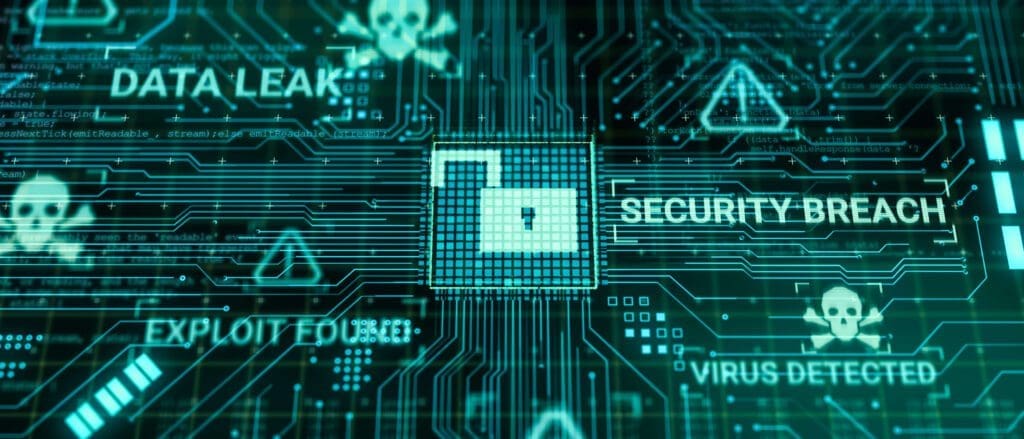In today’s cyberspace, data breaches have become an alarming threat to enterprises of different sizes and industries. The emergence of cyber threats has hurt enterprises. Losses emanating from cyber-threats are many, including loss of trust, compromised loyalty, exposed customer data, and potential theft. Cybersecurity attacks have different legal, reputational, and economic implications.
There’s no doubt that the increasing threats of cyberattacks alongside the rising sophistication of attack vectors highlight the need to reinforce our security architecture. Prioritizing cybersecurity will save you from millions of compromises. It will protect your critical resources – data, networks, and servers – from potential infiltration.
What’s a data breach and why do you need to know about it? A data breach is a situation whereby an unauthorized person or party gains access to your protected information. The information may include your clients’ names, credit card information, street addresses, and financial information.
Direct access to this information may lead to financial, reputational, and legal implications to you and your enterprise. So, when we talk about data breaches and your business, here are things that you need to consider.
5 Things to Look Out for to Protect Your Business from Data Breaches
At a time when data breaches are becoming increasingly prevalent, organizations must adopt a proactive approach to protect themselves. By adopting the following proven measures, organizations can reinforce their security architecture against breaches.
1. Implement a Strong Cybersecurity Strategy
A cybersecurity strategy refers to a detailed plan with tested-and-proven steps, cybersecurity best practices, mitigation processes, and recovery systems developed to prevent attacks. Organizations with a strong cybersecurity strategy detect threats, protect against them, prevent them completely, and even report them to the appropriate authorities.
A cybersecurity strategy aims to minimize risk and increased preparedness in case of an attack. When implementing a robust cybersecurity strategy, the following resources are vital for your success.
- Regularly update and patch your software. A critical step in preventing data breaches is to regularly update and patch your systems. Software vendors release updates and patches to protect against emerging forms of vulnerabilities.
- Strong passwords and Multi-factor Authentication (MFA). Use strong passwords and emphasize multi-factor authentication. Multi-factor authentication involves using different devices to access a protected account like an email address.
- Educate employees. An important element of your cybersecurity strategy is employee education and training.Studies show that a lack of human awareness and human error contributes significantly to data breaches. Kindly educate your employees on cybersecurity best practices, including identifying breaches, recognizing phishing, and identifying and evaluating DDoS attacks.
Implementing a robust cybersecurity framework will protect your organization from data breaches.
2. Secure Network Infrastructure
An important reason cyber criminals gain access to your network infrastructure is because the infrastructure is insecure, frail, and easy to access.
- Firewalls, intrusion detection, and prevention. A vital part of protecting your network infrastructure is installing firewalls, prevention, and intrusion detection systems. Firewalls evaluate incoming and outgoing network traffic. On the other hand, intrusion and detection systems detect any suspicious activity and block it.
- Secure Wi-Fi networks and encryption. Wi-Fi networks can be a potential target for attackers. It’s crucial that you secure your Wi-Fi networks using strong encryption controls. An important part of securing your Wi-Fi networks is separating guest access from critical business functions. You can also limit outside access.
- Network traffic. It’s advisable to monitor your traffic log. Identify the people visiting your website. Monitor your company’s traffic to ensure you’re not vulnerable to DDoS attacks. DDoS attacks occur when an attacker sends excessively ‘fake’ traffic to impair your network’s capacity to handle genuine traffic.
Securing your network infrastructure protects your business-critical data from unauthorized users.
3. Data Protection
It’s important that you protect business-critical data. Business-critical data refers to data and information that affects or touches on your most important business areas. These areas may include sourcing, supply, invoicing, payments, and dispatches. You can protect your most critical data using the following three approaches.
- Encrypt data in motion and at rest. Encryption is termed as a fundamental protection tool for securing sensitive data. The advantage of encryption is to ensure that even if your data is compromised by unauthorized users, it remains unusable and unreadable.
- Limiting access privileges. The key to safeguarding your data is limiting access privileges and implementing role-based access controls. Access to business-critical data must be granted based on a need-to-know basis. Implementing a role-based access control framework will ensure that appropriate employees have access to data only suited for their specific use.
- Back-up and recovery. Implement regular backup and recovery procedures in case your data is breached. Organization leaders should test data backup and data recovery procedures regularly to ensure availability and integrity in case of a breach. Most importantly, incorporate cloud solutions for added redundancy.
Preventing data breaches is critical in ensuring that your enterprise is protected from any forms of reputational, financial, and legal damages.
4. Security Assessments
You must constantly evaluate your cybersecurity posture to prevent unprecedented attacks and potential breaches. Conducting security assessments provides you with a detailed insight into your security architecture.
- Vulnerability assessments. Conduct vulnerability assessments and penetration testing to ensure your systems and networks are secure. Regularly assess the security posture of your infrastructure to identify weaknesses and provide insight into areas that require immediate improvement.
- Awareness. It’s advisable that you stay updated on the latest security trends. For instance, PayPal was a victim of a malicious cybersecurity attack where attackers accessed and compromised the financial information of34,000 accounts. Regular updates allow you to remain informed on the latest attacks and the sophistication of attacks leveraged by attackers.
Assessing your cyber infrastructure is critical in identifying weaknesses and evaluating areas of improvement.
5. Multi-Sector Collaborations
Cybersecurity is a complex domain that constitutes risks, effects, vectors, mitigation measures, and prevention strategies. Sharing information on the changing security landscape.
- Collaborate with cybersecurity vendors. Establish partnerships with cybersecurity solution providers to help you evaluate your cybersecurity posture, identify weaknesses, and implement the best practices.
- Regulatory compliance. The General Data Protection Regulation (GDPR) calls for the protection of individual and personal information. Under this framework, organizations are required to protect the information of their consumers. If this information is compromised or illegally accessed, the enterprises tasked with protection shall bear the liabilities emanating from the compromise.
Partnerships and collaborations foster information-sharing and help build consensus on emerging cybersecurity trends.
Edafio – Your Trusted Cybersecurity Partner
Edafio provides excellent cybersecurity, cloud computing, and health consulting services. Armed with years of experience in cybersecurity and related fronts, Edafio offers unparalleled cybersecurity and computing solutions to organizations of different sizes and sectors.
Contact Edafio to gain insight into your cybersecurity posture and health.








